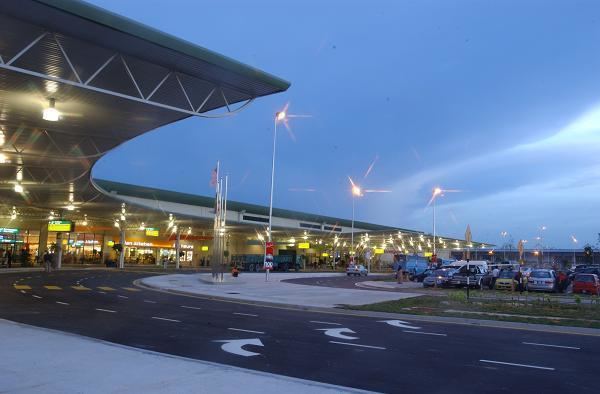 | ||
Low cost carrier terminal or LCCT a.k.a. budget terminal is a specific type of airport terminal designed with the needs of low cost airlines in mind. Though terminals may have differing charges and costs, as is common in Europe, the concept of an all budget terminal was promoted and pioneered by Tony Fernandes of AirAsia at Kuala Lumpur International Airport in 2006.
Contents
Description
In some cases, the designs of a low cost carrier terminal mimic old designs of an airport terminal, such as the former airport of Hong Kong, Kai Tak Airport. With a stripped-down airport terminal, airports can reduce daily operating costs significantly, thereby passing along the savings to budget airlines and ultimately their passengers. It specifically entails cost reductions from normal airports in terms of:
However these terminals may also have modern facilities such as free Wi-Fi, and be comfortably air conditioned. A German study (Swanson 2007) of costs showed that at Malaysia's KLIA and Changi LCCTs, airlines were charged roughly 2/3 to 3/4 the total cost of landing at the main terminal; for budget-sensitive carriers, any savings advantage can be critical.
Klia2 billed as the world's largest purpose-built terminal dedicated to low-cost carriers, is designed to cater for 45 million passengers a year with future capacity expansion capability. Built at a cost of US$1.3 billion, klia2 started commercial operations on May 2, 2014 at the Kuala Lumpur International Airport (KLIA) in Malaysia.
Realisation of the projects
While the concept of a simple basic terminal in theory would lower costs, in practice, it can be turned into a pork barrel project such as klia2.
When klia2 was first proposed MAHB said it would cost MYR2 billion, a figure that was later revised to MYR2.6 billion. Then came news that the terminal would cost MYR4 billion, double the original estimate. Now there’s talk that the bill could go as high as MYR5 billion. That makes no sense – the low-cost terminal will now cost much more than KLIA. Yes, I asked for a new terminal but one that has simple facilities. Did it have to cost 20 times our present LCCT?
Budget terminals also have to consider if they only serve budget airlines or all airlines. In this way, a terminal can essentially "lose its budget identity". In the case of Macau airport, "from an airport perspective, having a separate LCCT is frequently more expensive than having one terminal for all carrier types because of the need to duplicate services and systems including check-in, security and immigration." In the case of KLIA2, Malaysia Airports has instructed Airasia in 2016 that the overbudget terminal isn't a LCCT terminal at all.
